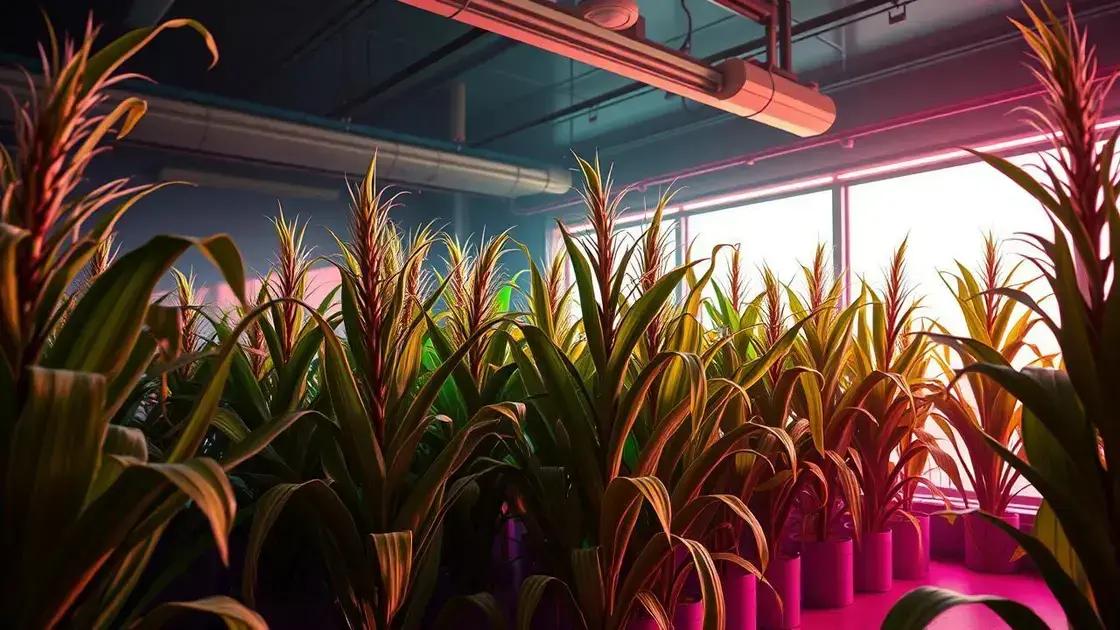How to Care for Corn Plant: 7 Essential Tips for Thriving Growth
How to care for corn plant can feel overwhelming if you’re new to plant care. However, understanding a few key principles can transform your experience. By focusing on the right watering techniques, light exposure, and recognizing common problems, even beginners can nurture thriving corn plants that brighten up their homes or gardens.
Table of Contents
ToggleWatering requirements for a healthy corn plant
Watering requirements for a healthy corn plant are crucial for promoting growth and vitality. Ensuring your corn plant receives the right amount of water can prevent various issues and enhance its overall health.
When it comes to watering, several factors come into play:
- Soil type
- Size of the plant
- Environmental conditions
- Seasonal changes
Understanding these factors can help you determine a suitable watering schedule. Here’s a breakdown of how to effectively manage the moisture levels:
- Check the soil moisture: Always assess the top inch of soil. If it feels dry, it’s time to water.
- Water thoroughly: When you water, ensure it reaches the root zone. This helps the plant absorb nutrients better.
- Frequency: During the growing season, a deep watering once a week is generally sufficient.
- Filter water: Use room temperature, filtered water to avoid shocking the plant.
Another aspect to consider is the humidity level in your home. Corn plants thrive in higher humidity. You can increase humidity by:
- Using a humidifier
- Grouping plants together
- Placing a tray of water near the plant
By incorporating these methods into your exploring indoor gardening techniques, you can ensure your corn plant stays healthy and vibrant.
To summarize, a careful approach to watering can significantly impact your corn plant’s health. Keep an eye on the moisture levels, adapt to the seasons, and you’ll be rewarded with a thriving corn plant!
Optimal lighting conditions for indoor corn plants

Optimal lighting conditions for indoor corn plants are essential for their growth and overall health. Ensuring your corn plant receives the right amount of light can help it thrive indoors.
Here are key factors to consider when providing optimal lighting:
- Light intensity
- Light duration
- Light quality (spectrum)
Understanding these factors can guide you in creating the best lighting setup:
- Light intensity: Corn plants require bright, indirect sunlight. Placing them near east or west-facing windows can provide adequate light.
- Light duration: Aim for around 12-16 hours of light daily. If natural light is limited, consider using grow lights.
- Light quality: Use full-spectrum bulbs to mimic sunlight. This helps in photosynthesis, promoting healthier and more vibrant plants.
If you notice your corn plant showing signs of stretching or leaning, it may be reaching for more light. Adjust the placement or change the lighting setup to improve its condition.
Implementing these exploring indoor gardening techniques will help ensure your corn plant flourishes with adequate light exposure.
In conclusion, proper light conditions are vital for corn plants’ success indoors. Regularly monitor their needs and make adjustments as necessary for optimal growth.
Common issues and solutions when caring for corn plants
Common issues and solutions when caring for corn plants can help you identify and resolve problems quickly. Understanding the challenges can make a significant difference in maintaining a healthy plant.
Here are some frequent problems you may encounter, along with their solutions:
- Yellowing leaves: This can indicate overwatering or nutrient deficiency.
- Leaf curling: Usually a sign of inconsistent watering or pest infestations.
- Stunted growth: May result from poor lighting or lack of nutrients.
Solutions for yellowing leaves
If your corn plant’s leaves are turning yellow, consider these steps:
- Check the soil moisture—adjust watering as necessary.
- Fertilize with a balanced nutrient solution to provide necessary minerals.
How to fix leaf curling
For curling leaves, follow these solutions:
- Inspect for pests like aphids or spider mites and treat accordingly.
- Ensure consistent watering; avoid letting the soil dry out completely.
Addressing stunted growth
To improve growth, focus on:
- Increasing light exposure to at least 12-16 hours daily.
- Regularly feeding the plant with a suitable fertilizer.
Additionally, maintaining humidity around your corn plant can prevent various issues. Use methods like:
- Grouping plants together to create a microclimate.
- Using a humidifier or placing a water tray nearby.
By implementing these exploring indoor gardening techniques, you can easily tackle common challenges and ensure your corn plants remain healthy.
In summary, recognizing the common problems along with effective solutions will equip you to take better care of your corn plants and promote their overall well-being.
In conclusion
Caring for corn plants requires attention to various factors, including watering, lighting, and troubleshooting common issues. By following the essential tips provided, you can ensure your corn plants thrive in an indoor environment. Don’t forget that a little extra care, such as maintaining humidity and using the right fertilizers, can lead to healthier plants. For further insights, check out these tips on enhancing your indoor garden. Happy gardening!

